Thank you for dropping by to our June diary update this time issued part way through the month rather than more usually at the end. This is because Neil our website guru from Progress Concepts is going on a work course for the latter half of June and so needed to have me write this issue mid month in order that he won’t be snowed under whilst trying to study.
Given that it has only been just over a couple of weeks since our last update there hasn’t been our usual month’s amount of work undertaken on our jet hydroplane Longbow to reflect upon and tell you about; so whilst I will discuss herein what I have managed to undertake in the past couple of weeks later in this post, what it has done is give me some degree of room within the update to tell you about a very touching story that dates back to the 1960’s up to the present day. I know a lot of those following our little venture and our interaction with friends who help us along the way, are going to love this and although it is not directly about a jet hydroplane, it very much relates to a hero of mine, a certain Mr. Ken Warby MBE, who drove his jet hydroplane to be the fastest man on water in the world.
For those that think Ken just woke up one day with no previous experience of boats or driving them at speed and decided to build his jet hydroplane Spirit of Australia, it may come as something of a surprise to learn that Ken has been a very successful circuit racer of powerboats for most of his life. Consequently he had a massive amount of seat time going fast out on the water winning boat races time and again before he ever started building jet hydroplanes.
This racing of powerboats was not just at local club level either, with Ken actually winning three Australian State Championships one after the other in 1967, 68 and 69 such was his dominance and skill as a driver, which is an amazing achievement by anyone’s standard. The craft in which he achieved such outstanding success was a ‘Lewis’ 16 foot long skiff boat called Monte Christo powered by a 260 cubic inch race engine V8.
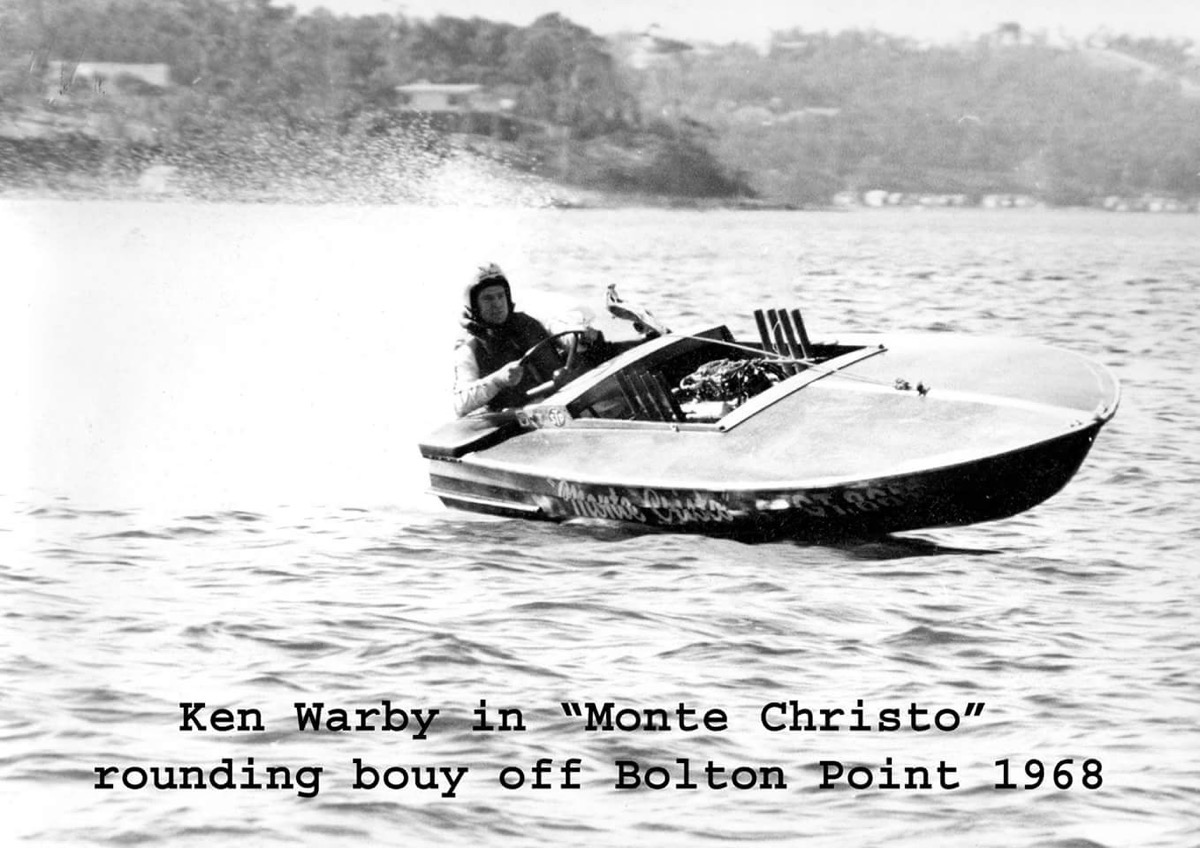
Now imagine how choked up you would feel winning all of that and being so attached to your race boat that had given so much terrific success over those years, then having to make the heartbreaking decision of having to sell her in order to fund your ambition of being the fastest in the world on water. To dare to attempt the Outright World Water Speed Record not knowing if you could do it or you would be killed trying to do it. I, like so many of yourselves will know with vehicles that we have sold over the years there would be a special one that we always wished that we could get back just to run our hands over, sit once more in it, fire up the engine and soak back up all of those special memories.
Well here is where the story gets really interesting because in September last year Rhonda Wojcikewycz, a close friend of Ken’s son Dave and boat racer herself, stumbles across one of these now very rare Lewis 16 foot skiffs hidden away. She knows the back-story to Ken having so much success with one and with Ken now living in the USA she lets Dave know that she has found it. Not only that but as luck would have it this boat had even raced at the same boat club that Ken had raced his Lewis skiff all those years ago.
In this case the boat had been restored by a father and son as a project to take their mind off the dad’s young lad unfortunately having been diagnosed with cancer. By all accounts the two of them really enjoyed throwing themselves into the rebuild, their time spent together and got a real kick out of seeing her finished and taking her out onto the water.
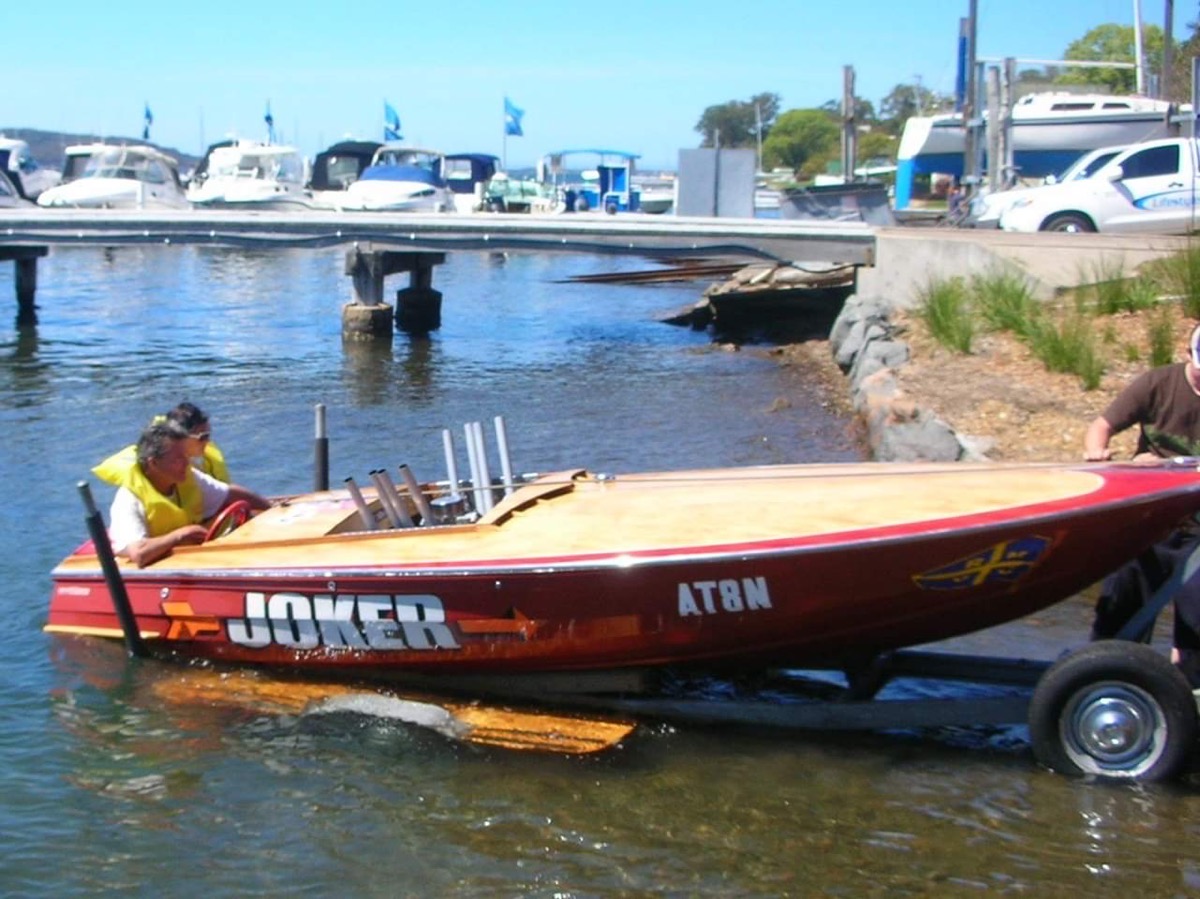
As we all know life can be so cruel and heartbreakingly the son then succumbed to the cancer and the father then passed away shortly afterwards. The mother who had now lost both her son and husband not surprisingly held onto the boat the two men in her life had worked on together as a way of cherishing those memories of happier times. She kept the Lewis hidden away in a shed for several years. It was at this point that Rhonda having learnt of the boat and Dave approached her and gave the background to their visit. They retold that the boat she had held on to was the exact same model that Dave’s father Ken had enjoyed so much success with in his younger days and that he regretted so much having to sell at the time to fund his record attempt. It must have been a very difficult and soul searching decision to let the boat go to a new home but equally one the widow ultimately felt was the right one under such unique circumstances.
Upon managing to purchase and collect the boat Dave and his team gave her a light further restoration of the hull, engine and trailer as a refresh due to the time she had spent unused and stored away.
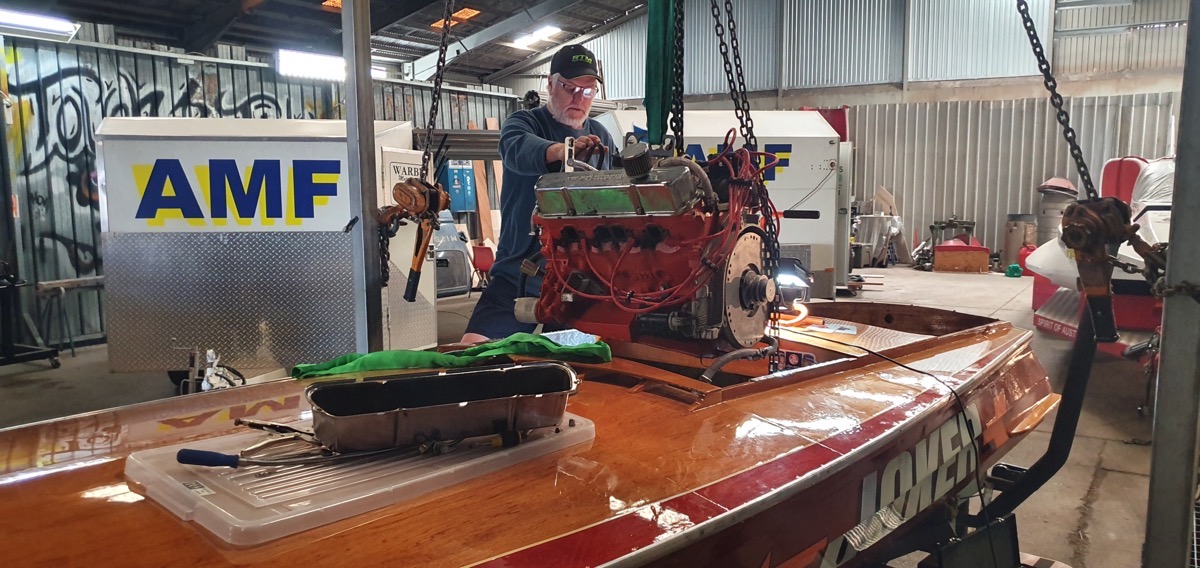
As part of that refresh Dave’s paint sponsor for his jet hydroplane Spirit of Australia 2 Norglas agreed to provide the paint to put her into the same racing green colour as Ken’s original Lewis. Dave then had the boat properly sign written by a craftsman (not stick on graphics) just how Ken’s original Lewis was and named the same original name of Monte Christo along with references also sign written onto the hull to reflect Ken’s achievements with his original Lewis. To top it all off Dave had the chap who formed the original propeller for Monte Christo back in the 60’s dig out his original pattern and make a new prop to the exact same match.
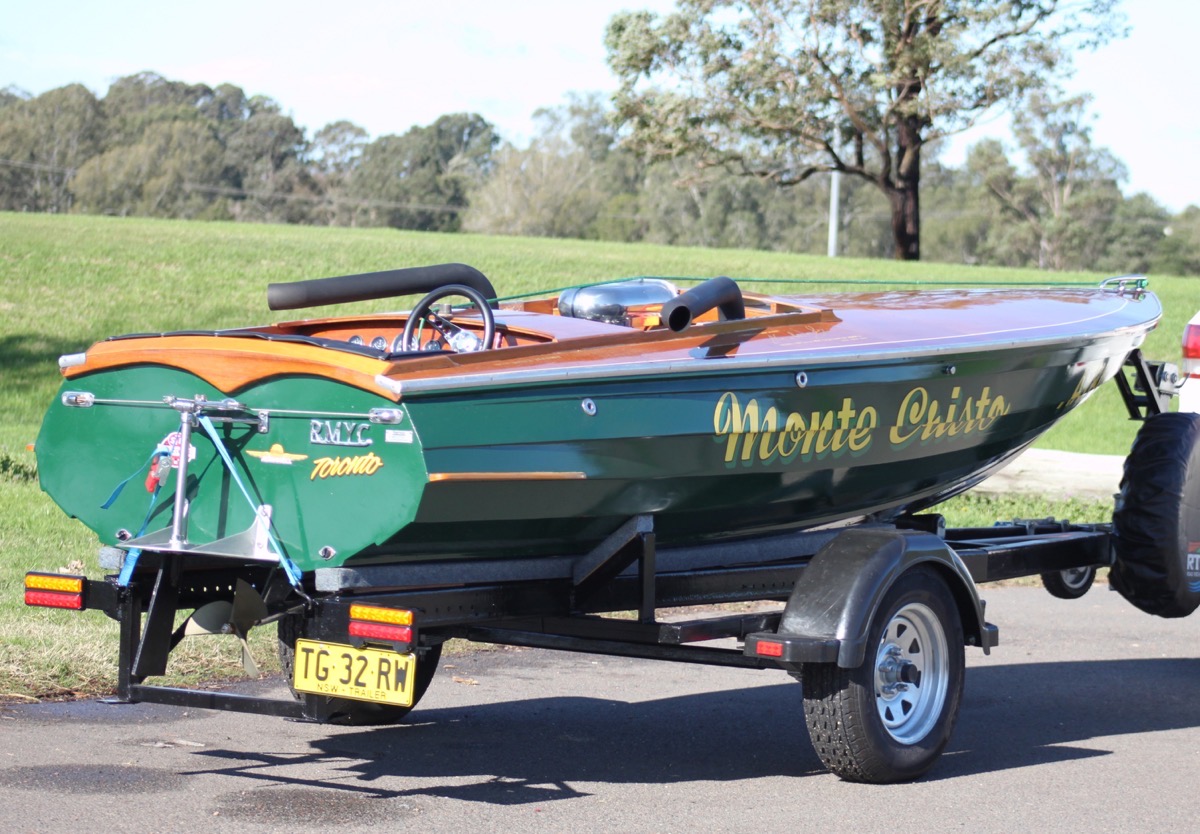
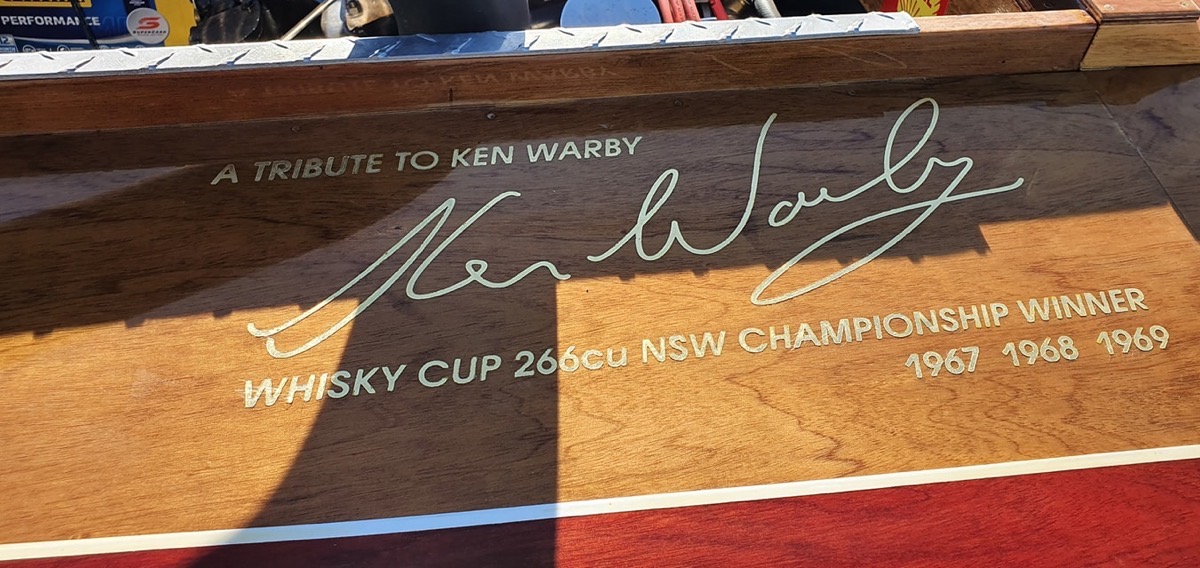
Can you imagine how Ken must have felt upon learning what his son Dave his family and friends had done for him by way of bringing Monte Christo back to life. I know how I would feel under such circumstances and it says everything you need to know about the legendary Warby family and I am humbled to have Dave as my great friend and mentor.
After saying thanks son for all that, I believe Ken has put Monte Christo on Ebay this week 🙂
Seriously (he hasn’t by the way) what a fantastic thing to do for your dad and so very well done to all involved. I am sure that Monte Christo will form part of a very treasured collection for this record breaking family.
Bringing things right up to date and staying with Dave, the superb fabrication of the T tail for Spirit of Australia 2 has just been finished by NP Aviation and both Spirit and the new T tail have now been collected by Dave and his team for return back to his workshop where the final fit and paint will be undertaken.
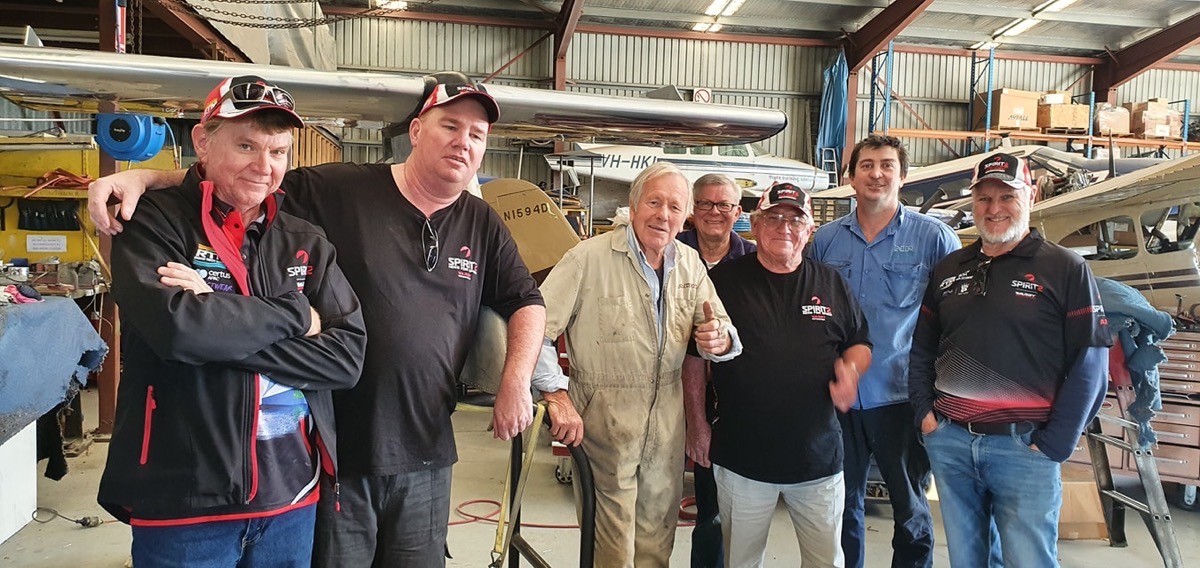
We cannot wait to see how Spirit looks and performs with her new tail and will keep you posted with further updates of their fantastic project next month.
Back with Longbow and last week our sponsor Yuasa batteries very kindly sent us a high output charger for the hugely powerful batteries that they have so very kindly provided to start our jet engines.
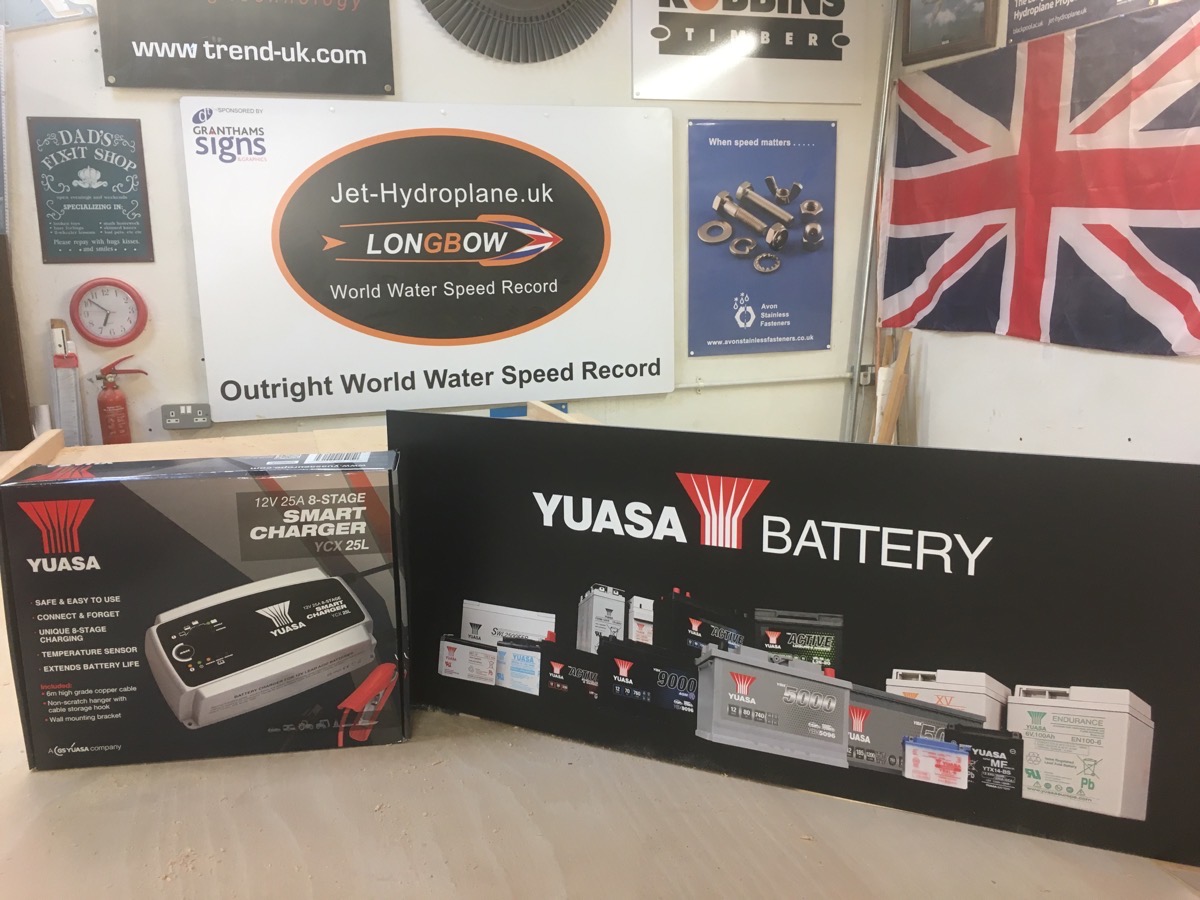
Now that we had the batteries to start the jet engines we then needed the large section electrical cables to link those 12v batteries together in order to obtain the 24v required for an engine start. Additional lengths of the same cable then are needed to go to the engine start control box and on to the two jet engines that are going to be side by side within the hull of Longbow. When it comes to running Longbow out on the water we will require a start system at either end of the lake for her so that is another set of matching cables required. When you begin to add all of that up including the lengths of cable for static testing of the jet engines in their stands prior to then being installed within the hull, that amounts to quite a substantial length of heavy duty cables and a fair amount of cable ends / battery lugs. Actually it may surprise you as it did us that it added up to over £1000 worth of heavy duty cables and associated product.
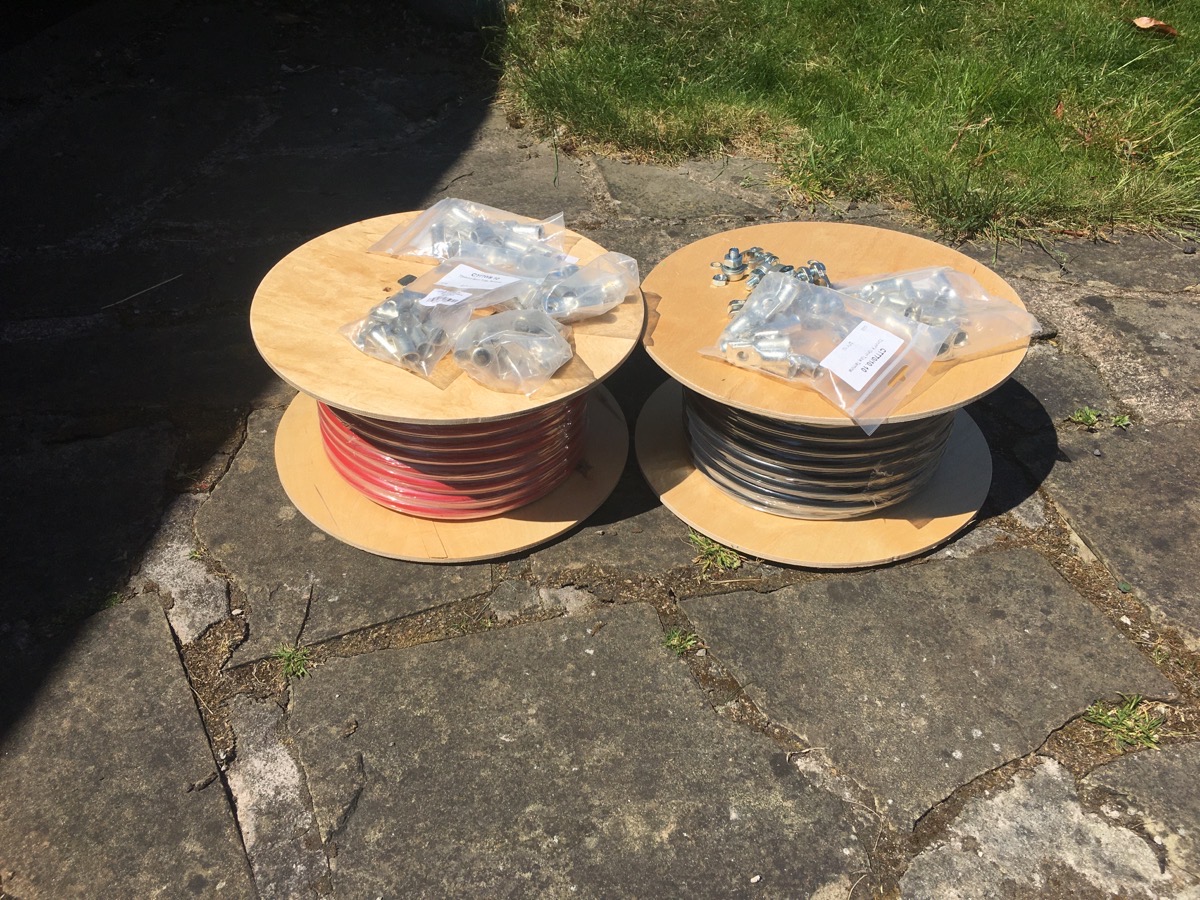
Fortunately Richard Fuller and Robbie Turner of County Batteries who supply a multitude of battery accessories and who are a major battery distributor, came to our aid and could not have been more helpful and knowledgeable about what we needed. They did a fantastic job of providing us with all the cabling and heavy duty lugs / battery connectors that we needed so thank you very much for coming on board with the venture and helping to make it happen.
Now we had the cables, the lugs and the batteries we needed to crimp those lugs to the large diameter cables and you are not going to do that with your normal set of lightweight crimps given the cables are 70mm². Asking around it appeared that some people had used a hammer and crimp punch for cables of this size or put them in the vice to crush the lugs onto the cable. When we told Tracey Taylor of RS Components one of our sponsors, about this she was having none of those half measures making a mess of things. She insisted on sending us a set of RS professional hydraulic crimpers because she wanted to ensure the job was done right, with the best tooling you can get for the task and what a quality piece of kit this was that she so kindly sent us to use:
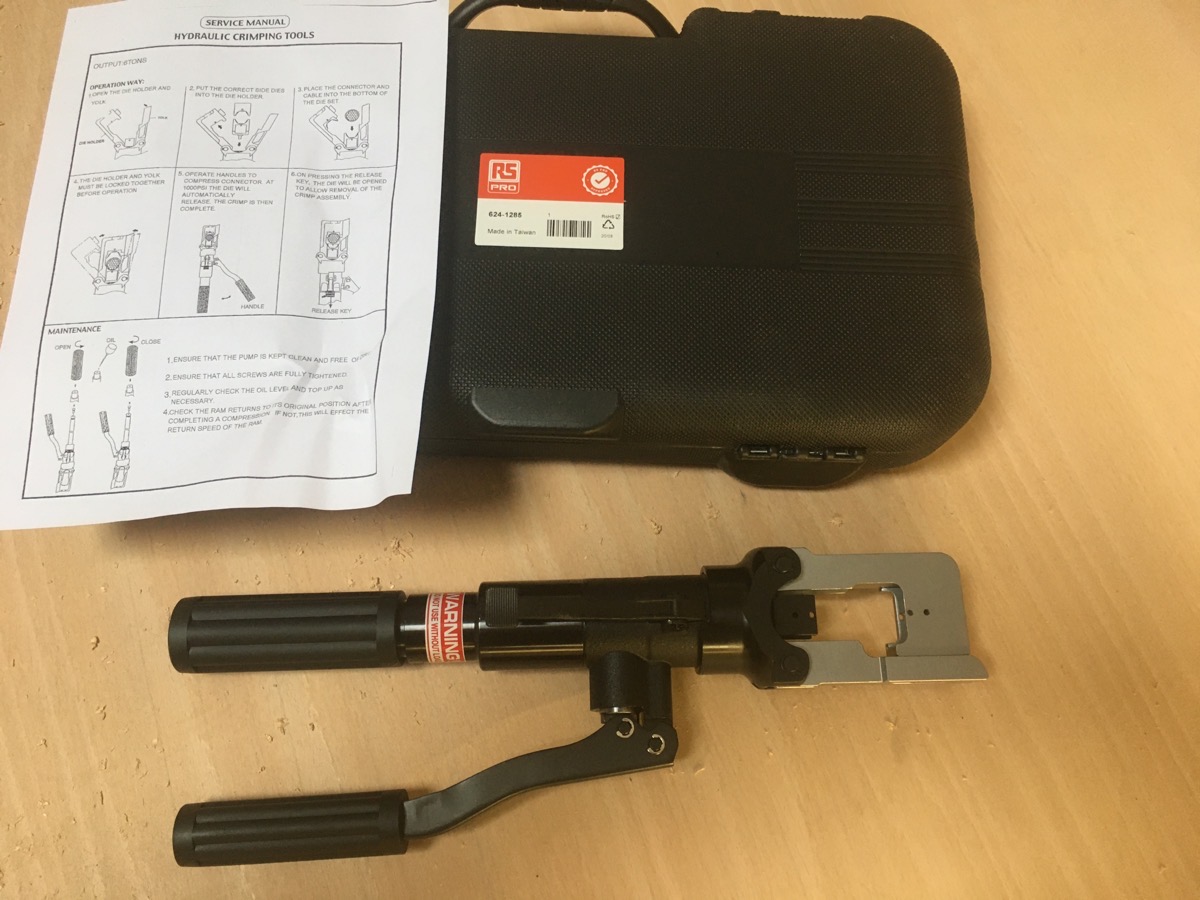
This month I passed on to one of our design engineers, Steve Dawber the following drawing that I had done for the static engine test control box:
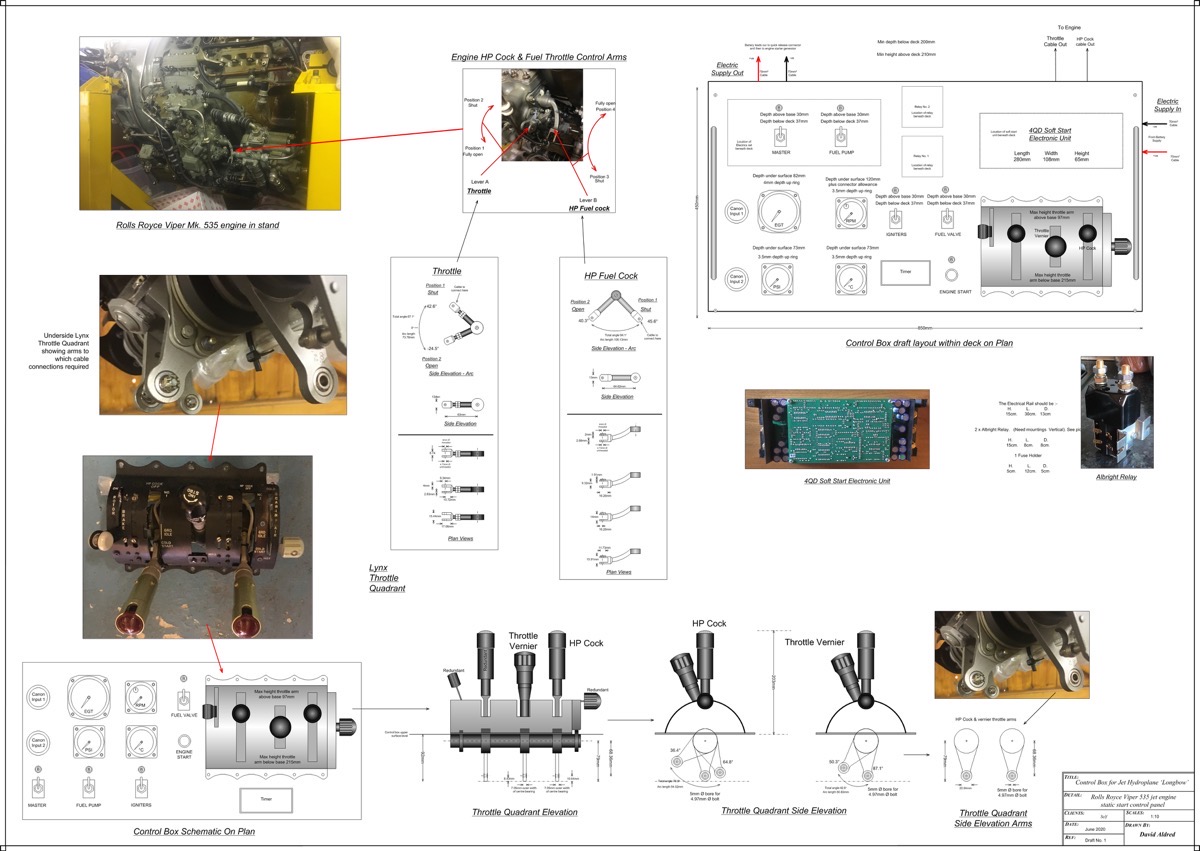
With that through Steve’s contacts and CAD conversion he arranged for the top plate of the control box that I had set out to be laser cut from aluminium sheet so my good friend John Fielding and myself can now begin to fit that out with the various switches and gauges that we will need to static test the jet engines.
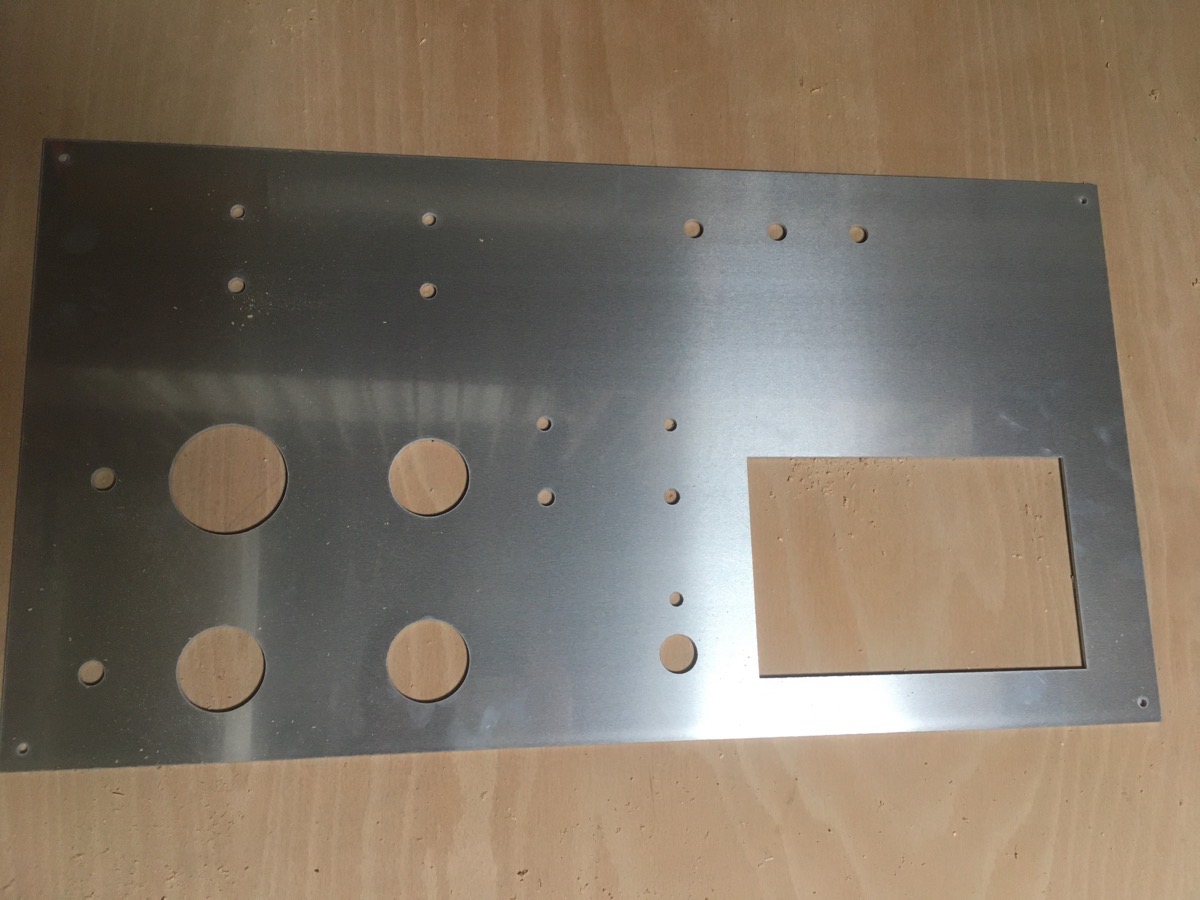
This month it has also been great to have my very good friend and gas turbine test bed engineer, Paul Davidson come and join the Longbow venture. Paul’s expertise is very much appreciated and along with our other gas turbine engineers will be of great assistance with the proper engine start, maintenance and running of our jet engines.
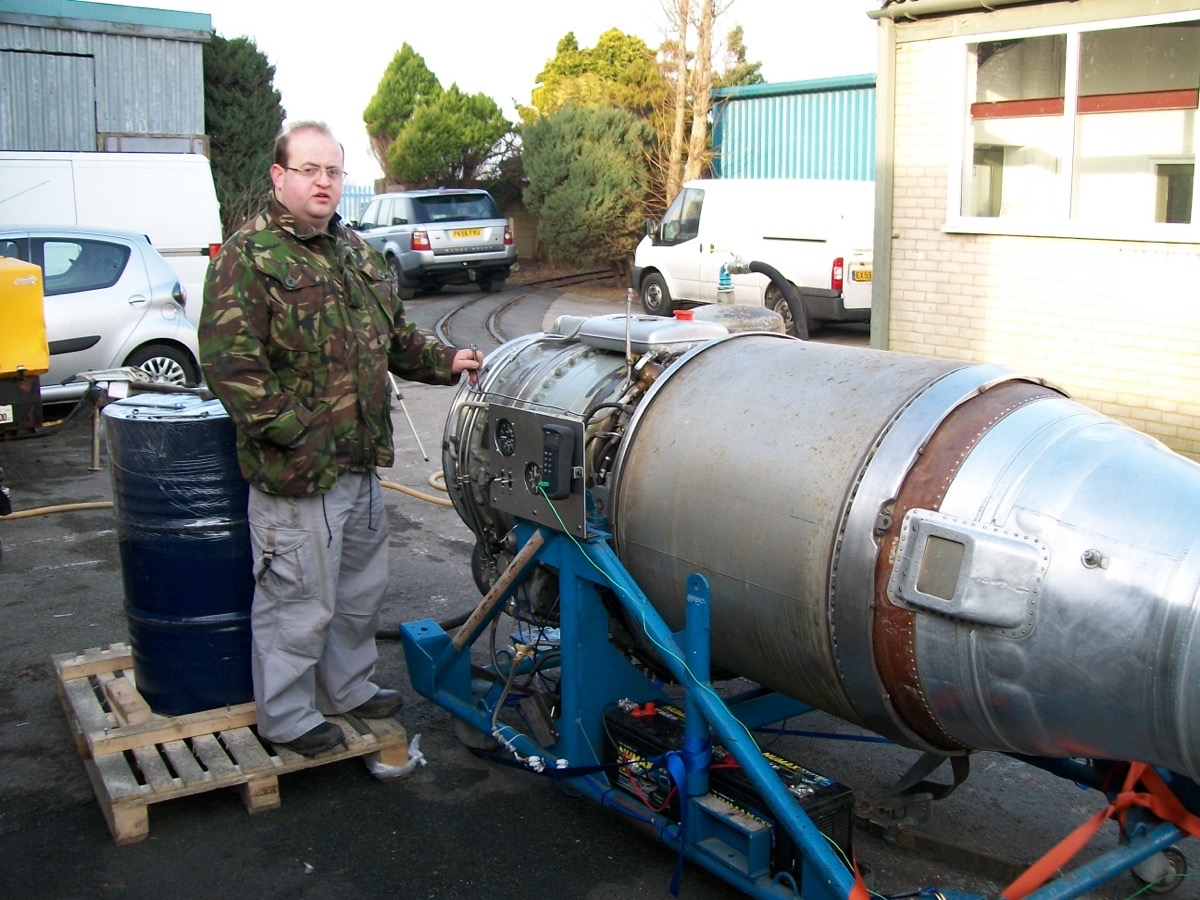
Many people around the world and especially in the UK who run gas turbines outside of the aircraft for which they were originally designed, be that either just for fun or with projects like jet cars or in our case jet hydroplanes will probably know of Paul. His escapades of travelling to remote countries to remove some very large turbines from military fighter aircraft for projects using local help are legendary.
Back in 2010 it was great to have him assist me with overhauling and rebuilding the Orpheus engines for the Bluebird replica K777 at Helical Technology. Paul has forgotten more about jet engines than I will ever know and I don’t think there is a turbine that he could not overhaul professionally given the right tooling. He is also a brilliant aircraft model maker who has built some amazing very large flying display models and indeed just a thoroughly nice chap! If you would like to visit Paul’s website please follow the link below and also have a look at his amazing YouTube videos:
Back with the hull of Longbow the next stage was to do the primary cut out for the timber runner to the underside of the sponsons. Once that was achieved the next job was to curve the roughly shaped timber which was the largest cross section that we have attempted to steam bend to date.
Consequentially due to the size of timber it would not fit into the lengths of plastic soil pipe we have used previously for wetting timber sections prior to steaming. Plan B was no good either as it would not fit into the plasterer’s bath I had, so scratching my head and since I do not live by a lake to float the wood into, I settled to slipping the lengths of timber into plastic lay flat sheet tubing rather like a very big sausage skin and filling that with water from the hose pipe. Once full of water knotting the ends of plastic sheet tubing leaving the wood to become saturated throughout its depth and length for a day or so did the trick.
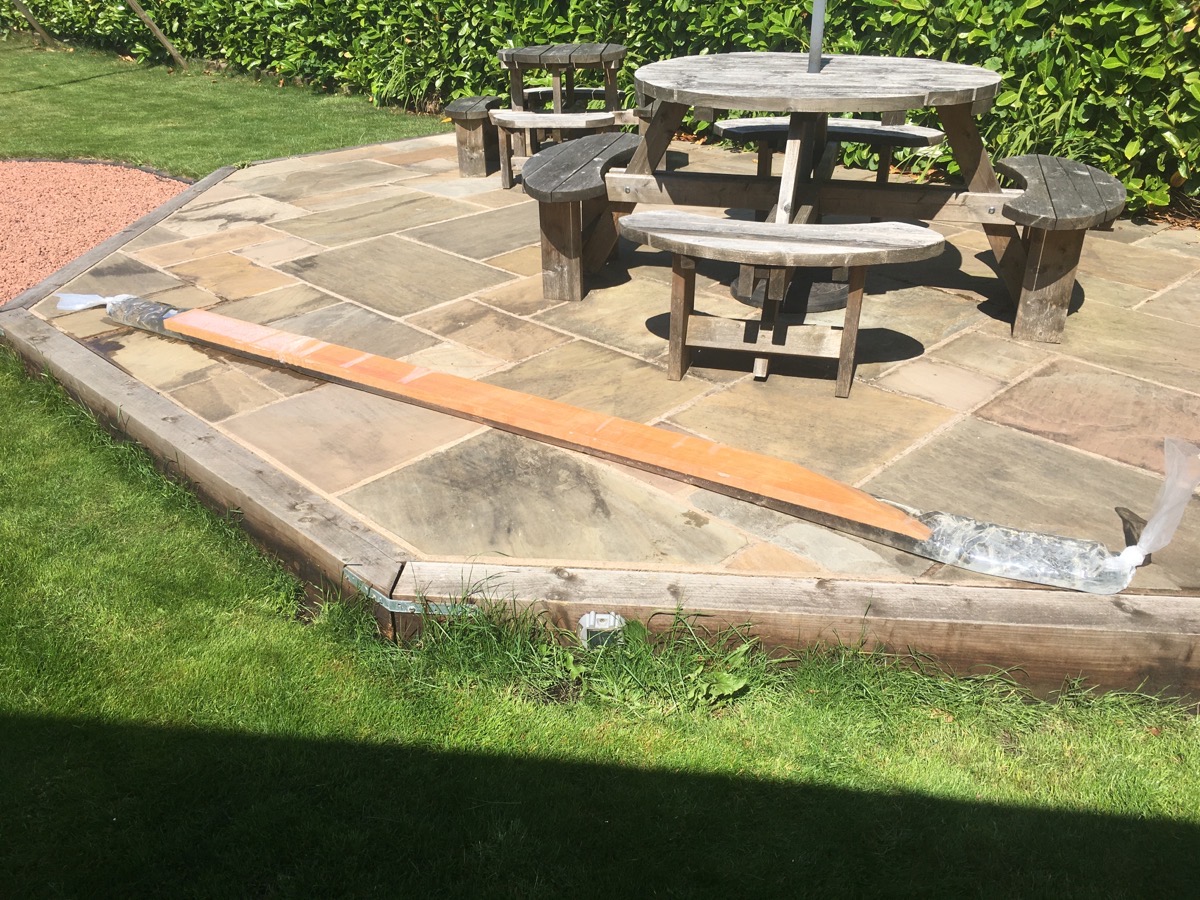
The soaked timber sections were then transferred to the steam box and left for an extended period of sauna time to soften the lignin within the wood, then quickly transferred to the hull, clamped, jacked and propped into position on the boat and left to dry down.
For anyone else doing such work you might want to bear in mind that you need to allow for the wood swelling primarily across the grain from being forcibly wetted and steamed. If you don’t the section of timber that you so carefully fitted into the respective joints when relatively dry is not going to fit when you later take it out of the steam box and race across to the boat trying to get it bent into position before it cools and the lignin in the wood sets. If you forget to allow for that then the amount of cursing you are going to do will ensure you don’t make the same error again.
You will notice from the photo that it was handy to have Longbow being built the way round that she is, as it allowed me to jack and prop down from the first floor ceiling joists that only occupy one half of the workshop.
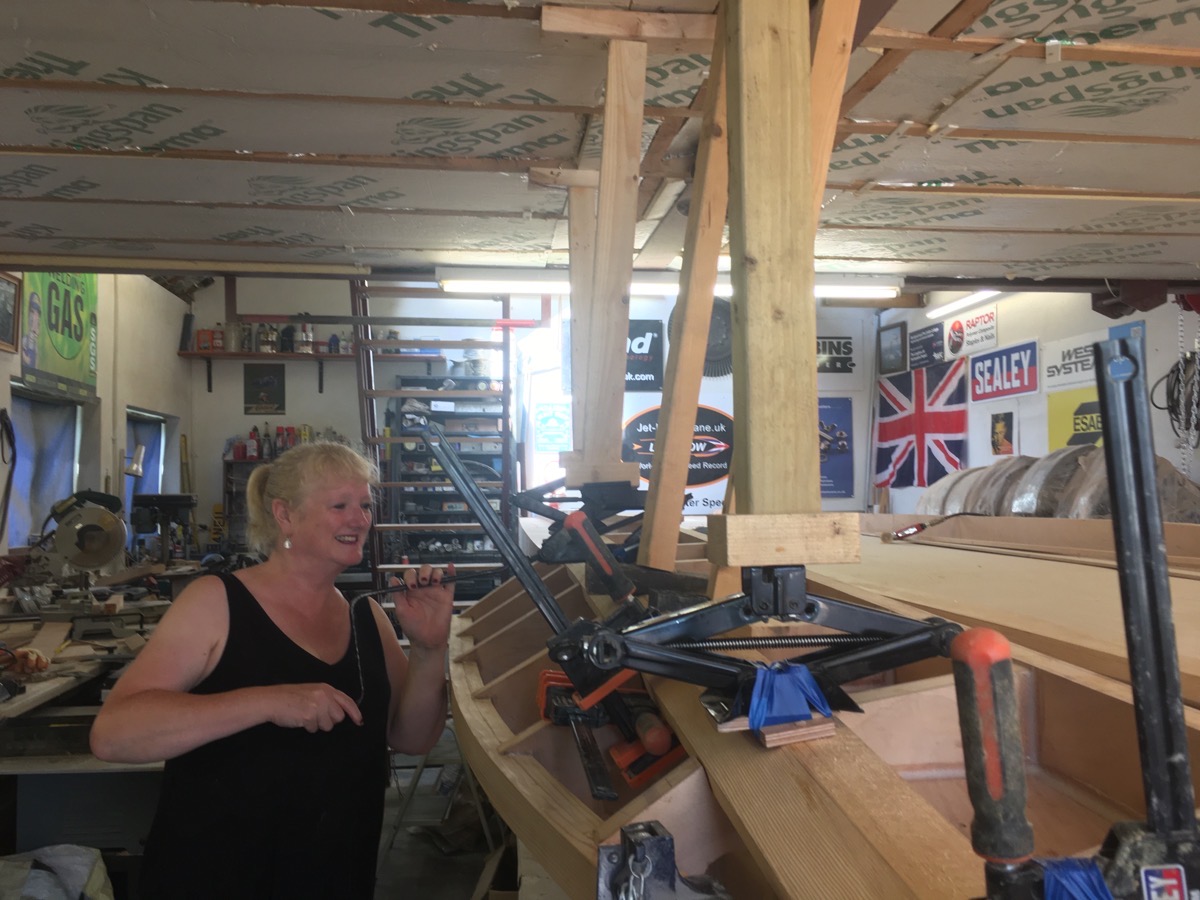
Currently we are waiting upon certain grades and types of timber coming from the USA to our great sponsor Robbins and then on to ourselves with a COVID related shipping delay, which hopefully will be with us shortly to carry on with steaming and fitting further sponson runners.
Speaking of the pandemic our driver for Longbow, serving Royal Navy pilot, David -John Gibbs (DJ) has had reduced flying as a consequence of the virus. This gave him enough free time to get his head into a book of his choice and as a result provided the following review of ‘Ultimate Speed’ by Samuel Hawley
ISBN 10: 1641600209 or ISBN 13: 9781641600200 as follows:
The name Craig Breedlove will be familiar to almost anyone interested in speed record history. In this recent book author Samuel Hawley sets out the story.
The book begins with a portrayal of Craig in his youth: the model aeroplane enthusiast with a huge appetite for technical knowledge who became bitten by the hot-rod bug whilst still at high school, and soon developed a taste for absolute speed. It quickly moves on to a fast-paced account of the series of jet cars and record attempts that made Breedlove a household name. Unlike many other speed record books, Samuel doesn’t major on the technology of the cars, or the challenges of driving them, but focuses on the man himself.
We are told of the immense challenges that he faced in his LSR quest: Treading the eggshell path to sponsorship and trying to manage a cohesive team whilst all the time maintaining a fairly colourful personal life were issues that would beset him throughout his career. The descriptions of failed business deals and numerous lawsuits (This is the USA after all…) seem to exemplify the phrase ‘The love of money is the root of all evil’, but despite a setback on almost every other page Craig is still portrayed as the eternally smiling and optimistic hero, supremely calm in the face of immense risk, with the overriding idea that the good guys will always win in the end.
I find the personality-focussed books always make for good reading and are more gripping than a book filled with hard facts and figures because they give a real insight into what drives (excuse the pun!) a person to tackle the immense challenges of chasing a record. I would, however, have liked a little more technical detail on the cars and also a bit more depth than the few pages devoted to his running speed record battle with Art Arfons (Whose nephew Craig Arfons was a WWSR contender in the late 1980s) and his race with the Thrust SSC team to run the first car to break the sound barrier. There are, however, several other books and internet sources available upon Craig’s cars if you want more detail on these technical aspects.
The book is very well researched and written, and was based on interviews with Craig himself and many of his colleagues from the past. There is a good selection of photographs, and a comprehensive set of source notes that will be of interest to the speed record historian. The book is currently selling at around £20 (hardback) from a number of online outlets, and should be an essential addition to any speed record enthusiast’s bookshelf or wish list.
Well that concludes this update folks and once again I thank you for taking the time to pop by to catch up with our progress. If you have not already done so please ‘like’ our Facebook page to keep in touch with the venture. Hoping we all stay safe in these most challenging of times and please call in next month for a catch up on the exciting build of our jet hydroplane Longbow.
